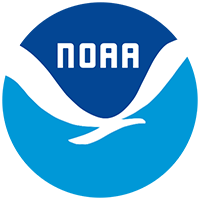Media & Press Information
NOAA SARSAT Posters and Brochures
Additional Cospas-Sarsat articles can be found on the Cospas-Sarsat website (External Link) at https://www.cospas-sarsat.int/en/search-and-rescue/published-articles
All media inquiries on the Cospas-Sarsat Program and/or NOAA can be directed to:
Mr. John Leslie
NOAA Public Affairs
SSMC-1
1335 East-West Highway, #7411
Silver Spring, Md. 20910
Phone: 301-713-2087
email: John.Leslie@noaa.gov
Media Synopsis:
Satellite Based Search and Rescue: The International Cospas-Sarsat Program
The Commerce Department’s National Oceanic and Atmospheric Administration (NOAA) operates a series of satellites in low-earth and geostationary orbits to detect and locate aviators, mariners and land-based users in distress. The satellites, along with a network of ground stations, and the U.S. Mission Control Center in Suitland, MD are part of the International Cospas-Sarsat Program, whose mission is to relay distress signals to the international search and rescue community.
Emergency beacons are used to transmit distress signals on the 406 MHz frequency to a constellation of Cospas-Sarsat satellites (and transmit low-power 121.5 MHz signals for close-range homing). Ground stations track these satellites and process the 406 MHz distress signals to obtain a location (using Doppler-Locating technology) of the distress. The processed information is then forwarded to a Mission Control Center where it is combined with other location and registration information and passed to the appropriate search and rescue authorities. Alternatively, some beacons operating at the 406 MHz frequency can use the Global Positioning System (GPS) to obtain a very accurate position. This position can then be transmitted as part of the distress signal.
The Cospas-Sarsat program is operated in the United States by NOAA, the U.S. Coast Guard, U.S. Air Force and NASA. Since the inception of the system in 1982, over 24,500 lives have been rescued worldwide and over 6,000 lives have been rescued in the United States.
